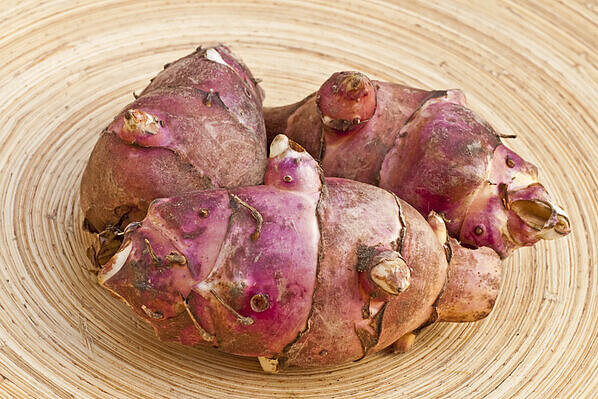Acacia fiber

In the constant search for the optimal diet for our dogs, we often come across a variety of ingredients, some of which stand out for their health benefits. One such ingredient is acacia fiber, also known as acacia gum, which is extracted from the resin of acacia trees. This natural fiber has already gained recognition in the human diet, but its benefits for dogs deserve a closer look. In this article, we explore what exactly acacia fiber is and discuss both the benefits and potential drawbacks of its inclusion in dogs' diets.
What is acacia fiber?
Acacia fiber, or acacia gum, is a soluble dietary fiber extracted from the resin of certain species of acacia trees. These trees are native to Africa, Australia and India. The fiber is known for its many health benefits, including its effect on digestion and its prebiotic properties. It is tasteless and can be easily incorporated into various foods and supplements, making it a convenient ingredient in the diet.
Benefits of acacia fiber for dogs
Promotes digestive health
- Prebiotic effect: Acacia fiber serves as food for the good bacteria in the intestines, which contributes to healthy intestinal flora. A healthy intestinal flora is crucial for effective digestion and can help prevent problems such as diarrhea and constipation.
- Regulation of bowel movements: Due to its ability to bind water in the intestines, acacia fiber can regulate bowel movements and help with both constipation and diarrhea.
Supporting general health
- Weight management: As a soluble fiber, acacia fiber can promote a feeling of satiety and thus help with weight management by reducing food intake.
- Blood sugar regulation: Acacia fibre can help to stabilize blood sugar levels, which can be particularly beneficial for dogs with diabetes.
Potential disadvantages of acacia fiber
Despite the many benefits, introducing acacia fiber into dogs' diets can also have potential drawbacks, especially if given in inappropriate amounts.
- Indigestion: Excessive consumption of acacia fiber can cause digestive problems such as bloating, cramping or diarrhea in some dogs.
- Allergic reactions: Although rare, some dogs may have an allergic reaction to acacia fiber, which can lead to skin rashes or other allergic symptoms.
Recommendations for dog owners
When introducing acacia fiber into your dog's diet, it is important to do so gradually and carefully monitor your dog's reaction. Start with small amounts and gradually increase them to minimize the risk of digestive upset.
Acacia fiber offers a number of health benefits for dogs, particularly in relation to digestive health and weight management. However, as with any supplement, responsible use is important to avoid potential downsides. By introducing it gradually and carefully monitoring your dog's response, you can reap the benefits of acacia fiber while ensuring the well-being of your four-legged friend.
Properties 8
Are you looking for other ingredients with a specific property?
Just click on them to find more.
If you notice any signs of hypersensitivity or poisoning in your dog, you should see your vet immediately. We are not a substitute for a vet, but we try to be as accurate as possible. Every dog reacts differently and we recommend you get a second opinion or consult your vet if in doubt.
Stay healthy and take good care of your four-legged friend!😊
Similar to Acacia fiber
Inulin is a carbohydrate that consists of several fructose molecules. It is used by plants as an energy store and is found, for example, in chicory, artichokes, Jerusalem artichokes and dandelions....
Psyllium husks consist of around 65% soluble and 35% insoluble fiber. The soluble fiber can bind water and thus swell up. The insoluble fiber increases stool volume and promotes bowel movement....
Guaran is an extract from the seeds of the guaraná plant (Paullinia cupana), which is mainly found in the Amazon region. This extract is rich in guaranine, an active ingredient that is structurally...
Agar-agar is an extract from red algae, which mainly grow in Asia. It has a gel-like consistency and can be used as a thickening or gelling agent. Agar-agar is tasteless and contains no animal...



